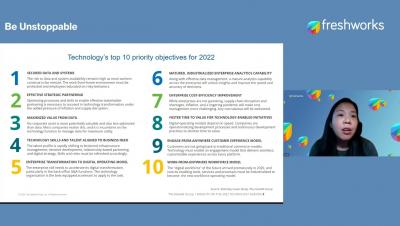Operations | Monitoring | ITSM | DevOps | Cloud
Freshservice
ITOM | Anywhere Operations - An Operational Mindset to Remain Uninterrupted and be Unstoppable
Top 10 Priorities for Tech Leaders in 2022 | IT Leaders | CIOs
4 Key ITSM Trends for 2022 | ITSM Trends | CIOs
Building an 'anywhere operations' mindset for uninterrupted IT
Given a choice, would you rather wait for a cab ride that’s 25 mins away or look for other options to reach your destination faster? Without a doubt, you would pick the latter, right? Today’s ‘want-it-now’ consumer mentality is driving most technology organizations to rethink how they interact with employees and customers. Employees have consumer-grade expectations for corporate applications, and IT requests at the workplace.
5 reasons an IT service desk is not just for IT teams
When the capabilities of IT service management are applied to other business functions like HR, Finance, Facilities, Legal, Sales, or Marketing to improve service delivery, it is known as ESM (Enterprise Service Management)
How to gauge the maturity of your IT operating model?
Like most things that are changing and challenging our way of living, the accelerating change in unfamiliar customer behaviors disrupted supply chains, and diverse regional responses are challenging the traditional IT practices. To address these adverse circumstances that are stressing current operating models, companies must envision and execute new experiences, and digitally express their brand values to customers and employees by meeting their needs at relevant points of engagement. How?
5 ways to become an effective enabler of IT service management
The business needs of IT Service Management (ITSM) are evolving, and I&O leaders must take sufficient action to position their ITSM practices as an enabler of digital business instead of a bottleneck. A recent Gartner report on the 2022 Strategic Roadmap For IT Service Management states, “By 2024, 80% of ITSM teams that have not adopted an agile approach will find that their ITSM practices are ignored or bypassed.”
Enterprise Service Management: A key ingredient to uninterrupted IT
A never-ending global pandemic and the Great Resignation that shows no sign of slowing down, have made one thing very clear. In order to sustain in a volatile environment such as what’s being witnessed, organizations must level up their IT game to ensure the business runs smoothly and deliver a delightful employee experience every step of the way. To simply put, uninterrupted IT is the need of the hour for unstoppable business.
Leverage these 6 features of your ITSM tool to improve employee experience
With a paradigm shift to hybrid work practices and remote working, some critical questions arise. Firstly, how can organizations optimize employee engagement by using service management technology and principles? Secondly, how to digitize processes and assets? Thirdly, and most importantly, how to keep operations running in a world where the ‘work-from-anywhere’ workforce model is prevalent?







